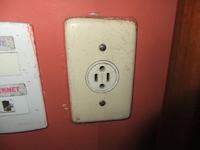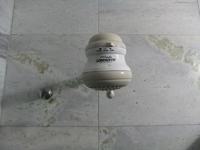As I wrote, some installations in the USA are very old ... And it is true that there is often a two-phase system in flats, but in all newer installations three phases are introduced because the difference in costs is small and the benefit is large and an air conditioner in each window.
In Poland, in the 1960s or even the 1970s, there were two-phase installations, often there were such installations in welding or blacksmith workshops, where transformer welders powered from 380V were used. There were even special Polish two-phase meters. I even remember such an exercise from the Measurement Laboratory at the Technical School: "checking a two-phase counter".
All professional equipment from the USA - if it is more powerful - has a 220 / 230V supply voltage. I used to install American-made transmitters in Poland, which used impulse power supplies and required 220 / 230V. There were always several power supplies - often in a redundant system - e.g. 6 units, and they could be connected by two for one phase or in any other systems.
Professional "general cargo" is most often equipped with 110 / 230V impulse converters.
As an interesting fact, it is not only in the USA that the voltage of 127V is used - or was it used. Back in the 1980s, in the Siberian part of the USSR, I saw local power plants (in places away from the main power lines) operating on original American power generators straight from Land-Lease or UNRRA transports. Only the rotational speed of the engines was changed from 1800 to 1500 rpm so that the generator was 50 Hz, not 60 Hz.
Therefore, Soviet electronic equipment was almost always equipped with voltage switches.
In Poland, in the 1960s or even the 1970s, there were two-phase installations, often there were such installations in welding or blacksmith workshops, where transformer welders powered from 380V were used. There were even special Polish two-phase meters. I even remember such an exercise from the Measurement Laboratory at the Technical School: "checking a two-phase counter".
All professional equipment from the USA - if it is more powerful - has a 220 / 230V supply voltage. I used to install American-made transmitters in Poland, which used impulse power supplies and required 220 / 230V. There were always several power supplies - often in a redundant system - e.g. 6 units, and they could be connected by two for one phase or in any other systems.
Professional "general cargo" is most often equipped with 110 / 230V impulse converters.
As an interesting fact, it is not only in the USA that the voltage of 127V is used - or was it used. Back in the 1980s, in the Siberian part of the USSR, I saw local power plants (in places away from the main power lines) operating on original American power generators straight from Land-Lease or UNRRA transports. Only the rotational speed of the engines was changed from 1800 to 1500 rpm so that the generator was 50 Hz, not 60 Hz.
Therefore, Soviet electronic equipment was almost always equipped with voltage switches.











